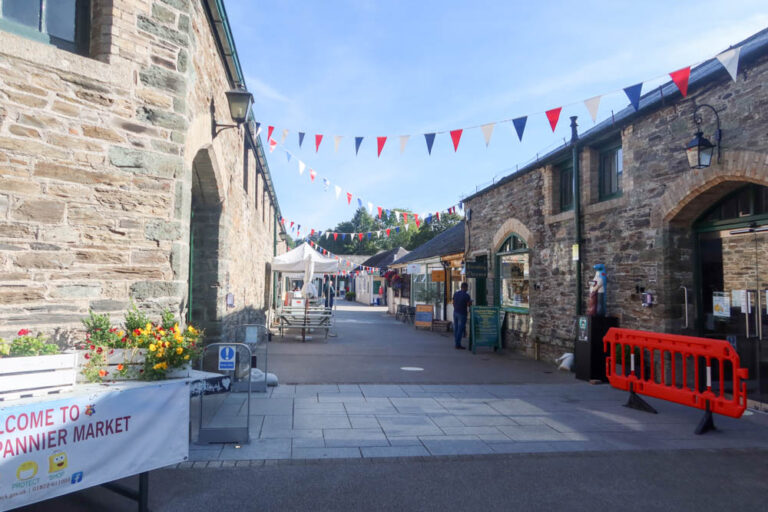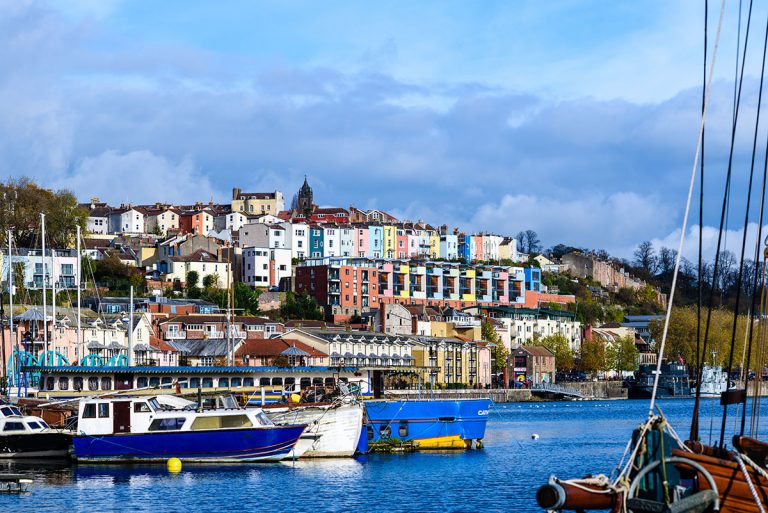Things to do in Exmoor National Park in Somerset and Devon
Exmoor is a West Country national park that spans across South West Somerset and North East Devon.
It’s a rugged, wild moorland that gives way to a rollercoaster-esque collection of cliffs that occasionally lead down to a beach or two below.
Despite the barrenness of Exmoor, there are plenty of things to do here – in fact, it’s the stunning landscapes that make it a destination that should definitely be on your South West England bucket list!
So, what is it about Exmoor?
What are the best things to do, where should you stay, and how do you get around the region?
Here’s all you need to know.
Where is Exmoor?

Exmoor is on the north coast of Devon and the West Somerset coastline.
It extends about 15 miles inland, so it boasts both dramatic coast and rugged moorland.
It’s located a 1-2 hour drive from Exeter (depending on which part you go to), so it’s a great day trip from the Devon city.
It’s around 2 hours from Bristol, so is a feasible day trip from here as well.
Things to do in Exmoor
Dunster Castle
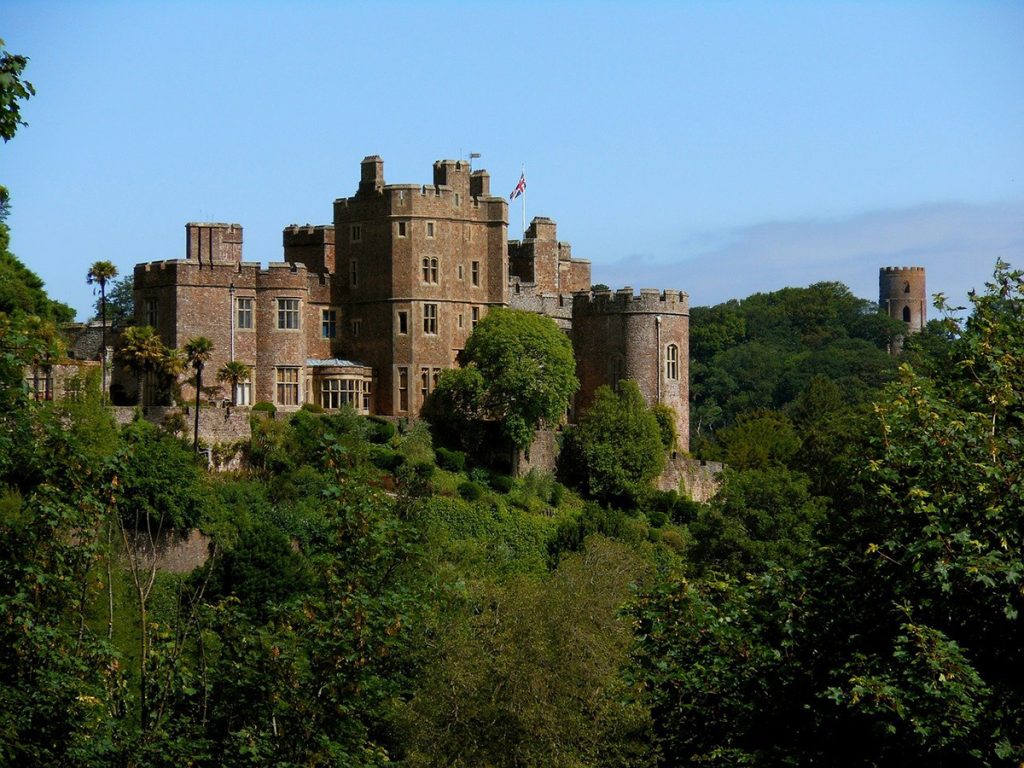
A Medieval castle standing proudly atop a hill, Dunster Castle is a must-visit when you’re exploring Exmoor.
Run by the National Trust, the castle dates back to the Norman era; although the gatehouse is Medieval.
Once home to the Lutterell family, this is definitely one of the prettiest castles in Somerset, with terraced gardens and scenic views over the river.
The architecture is a patchwork of different styles, and it’s worth exploring the inside of the fortification turned country home too.
Dunster Village
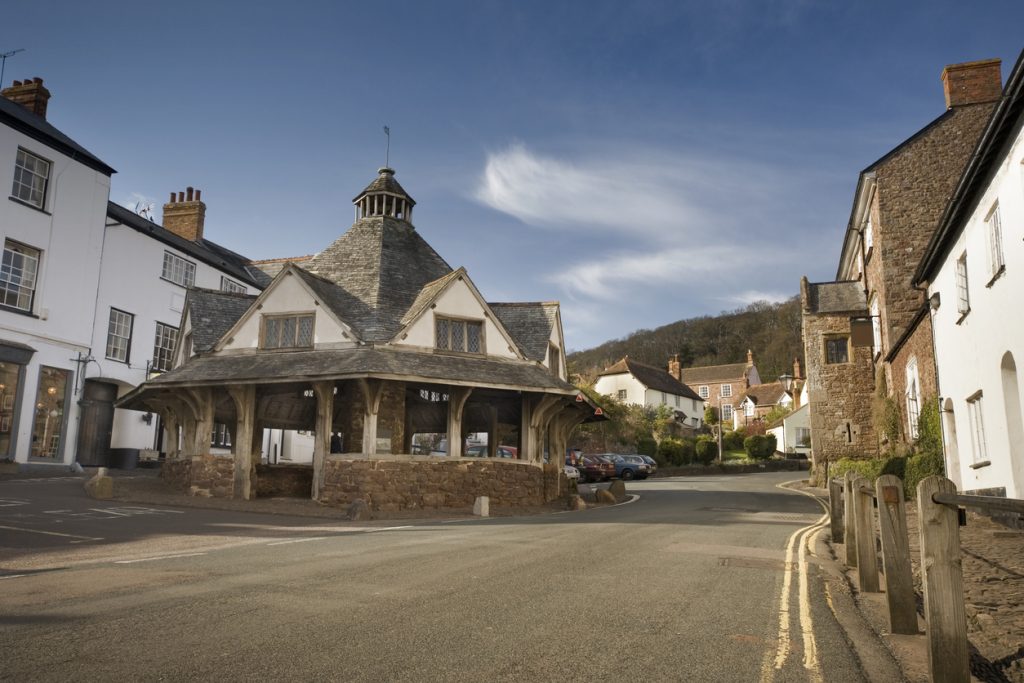
Once you’ve explored Dunster Castle, it’s time to head into Dunster Village!
This is one of the most perfectly preserved Medieval villages in the UK, and it’s ideal for a stroll around.
You’ll feel as though you have gone back in time as you enjoy the Yarn Market, rustic shop fronts and the ancient church with a carillon of bells.
Dunster Working Watermill
Also run by the National Trust, Dunster working watermill dates back to the 18th Century. It has been restored since and is now – as the name suggests – fully functional.
It’s located on the Dunster Castle grounds, housed in a Grade II* – Listed building. It produces 10 tonnes of flour every year and is visitable on a trip to the castle.
Valley of Rocks
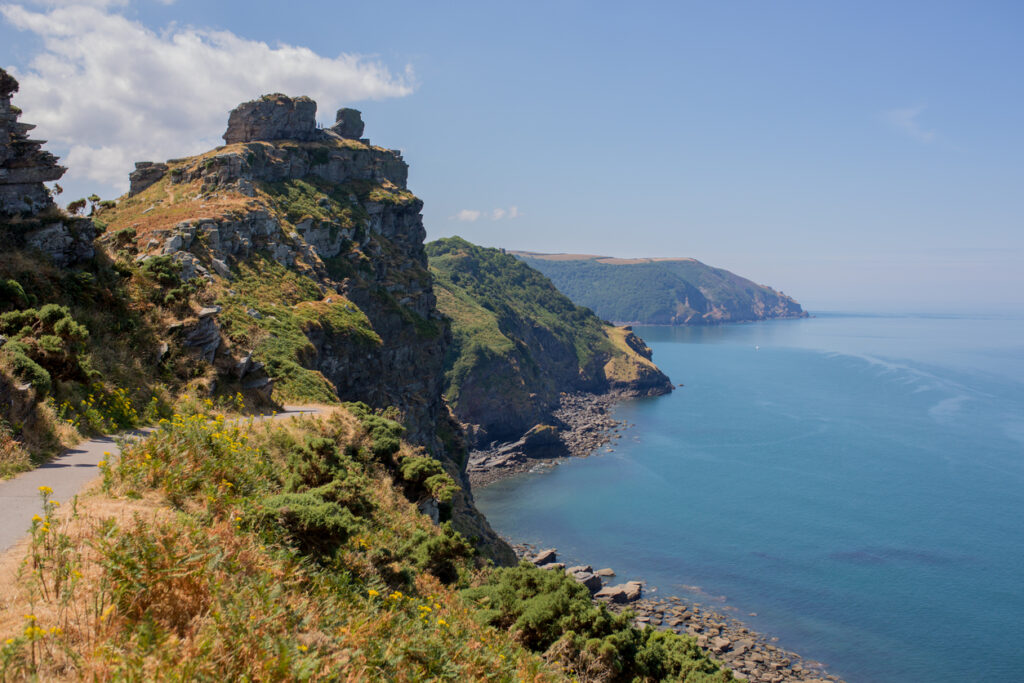
The Valley of Rocks is among the best natural attractions in Exmoor.
Situated along the coast from Lynmouth, this collection of rock formations is among the oldest in North Devon.
Apparently, they’ve been around since the last Ice Age and are part of an ancient tributary of the East Lyn River!
You can take a circular walk from Lynton, around the valley, and then inland back to the village. This is around 2.9 miles or 1.7 kilometres.
The walk is quite easy, and is a great alternative for someone who fancies a stroll but doesn’t want to commit to a huge SWCP hike!
You can also climb up the rocks – but of course, do that at your own risk.
There are lots of resident Exmoor goats in the area, and if you’re lucky you may see them clambering up and down impossibly steep cliffs!
See more of the best things to do in North Devon here!
Porlock Weir
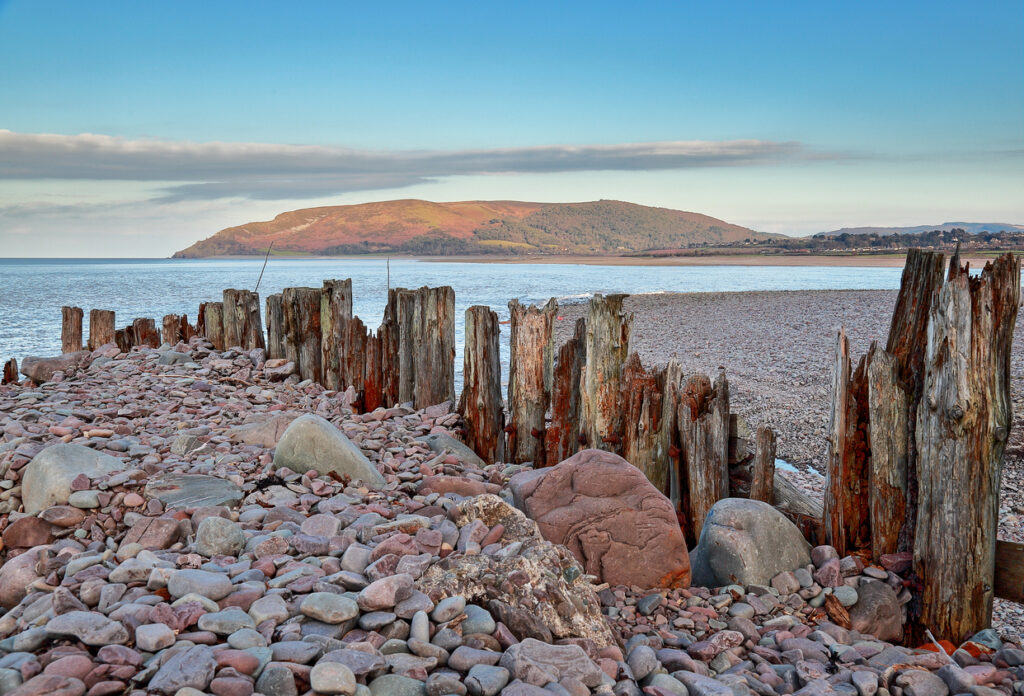
Located just along the coastline from Porlock, Porlock Weir is an even smaller coastal settlement.
The stroll from Porlock to the weir is another one of my favourite Exmoor walks.
In the weir itself, you can try local oysters, relax on Porlock beach and enjoy the charming scenery.
Or, enjoy an activity with Exmoor Adventures; they offer canoeing and biking opportunities.
Lynmouth Beach

While Exmoor has a lot of dramatic coastal scenery, it doesn’t have a crazy amount of beaches where you can laze back and watch the world go by.
Lynmouth Beach, in particular, is a busy working beach, with lots of fishing and recreational boats going out at any one time.
But it’s an interesting beach to walk along and take in.
There are a few other things to do in Lynmouth too.
Visit the sobering exhibition about the floods, which took place in 1952, go uphill to Lynton on the funicular with gorgeous vistas over the coastline, and walk the poet’s way back downhill, where you can read about the many poets who have been inspired by this part of Devon.
In Lynton, check out the Lynton Cinema (one of the smallest in the country) and a handful of shops and restaurants.
Climb Up Dunkery Beacon
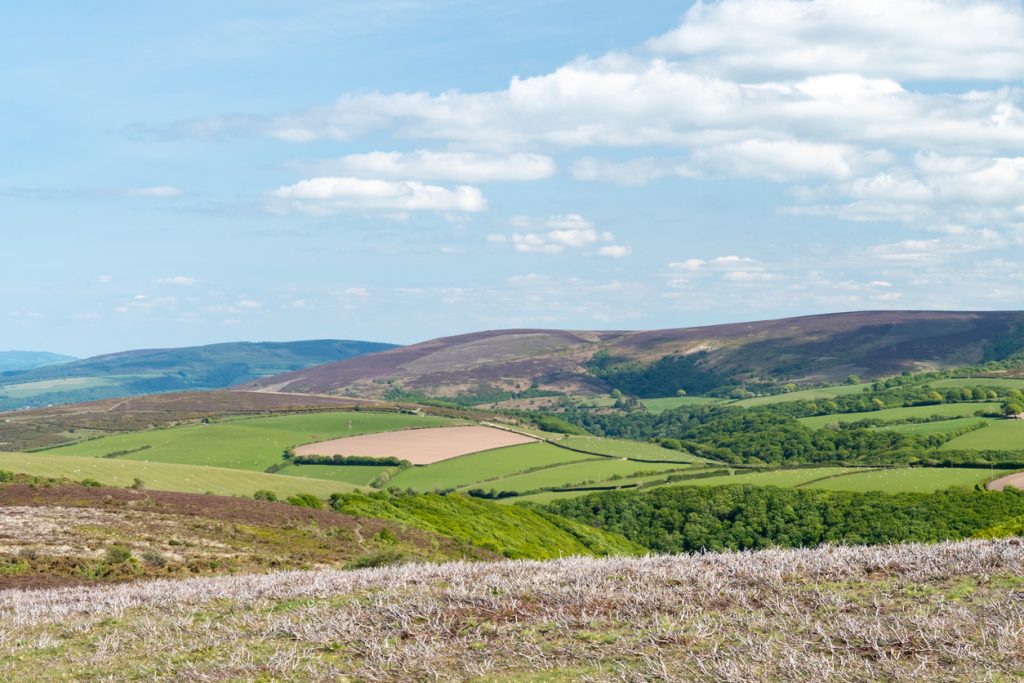
Dunkery Beacon is the highest point of Exmoor all of Somerset.
Despite this title, it’s relatively easy to climb up it – at least compared to the rollercoaster that is this part of the South West Coast Path!
It’s around a 2.5-mile climb from the bottom of Dunkery Hill, although we parked in the nearby village Luckwell Bridge and walked across some fields to there.
From the top, you can take in views of the whole park, including the coastline and moorland.
Hike the South West Coast Path

It’s no surprise that there are lots of beautiful walks around Exmoor, but the South West Coast Path links up all of the best coastal walks.
However, I do need to preface this – this part of the South West Coast Path is tough. We did the Porlock to Lynmouth walk, it took all day, and we could barely move at the end of it!
If you have a good level of fitness and don’t have a large backpack, it could be enjoyable though! There are some spectacular views as you go up and down the cliff paths, and you’ll enjoy gorgeous woodland too.
You can read my full blog post about the Porlock to Lynmouth walk here.
There’s also the Lynmouth to Combe Martin walk – we actually missed this one due to being so knackered from the previous day, but are planning to go back and complete it soon!
Camp in Porlock Village
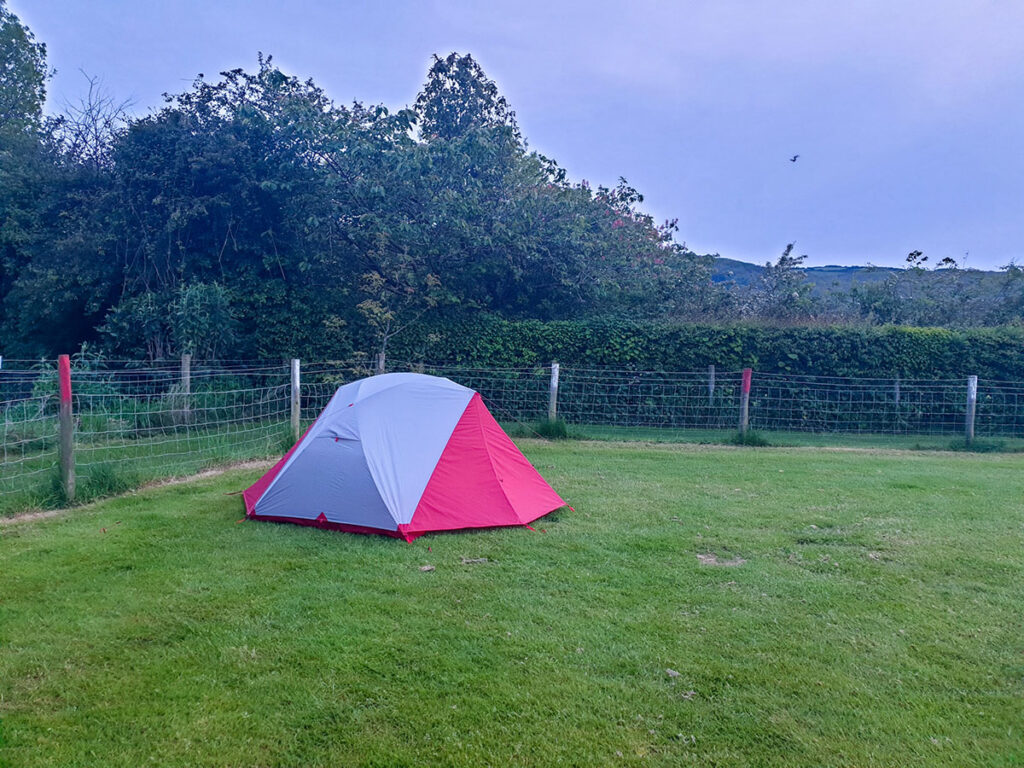
Exmoor is a place to go slow and immerse yourself in nature.
And what better way to do that than camping in Porlock village?
Porlock is a charming village with a few decent pubs and lovely local traditions, including a town crier and an annual local fayre.
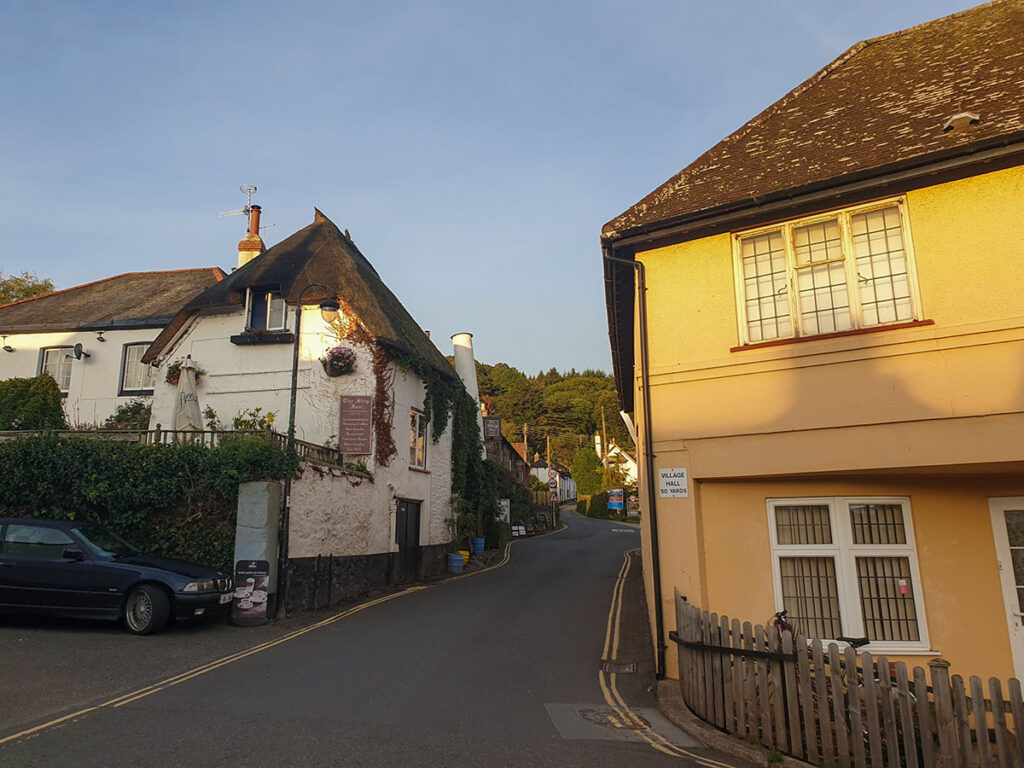
It’s also home to the steepest A road in the country – on any given day, if you stand at the top you’ll be able to smell the burning clutches!
Porlock Holiday Park boasts self-contained mobile homes which are rentable and a large tent field with views of the moor.
It’s the ideal place to base to explore the eastern part of the moor, but staying here is such a lovely relaxing experience, that it’s worth a place on this things to do in Exmoor list in its own right!
Cleve Abbey
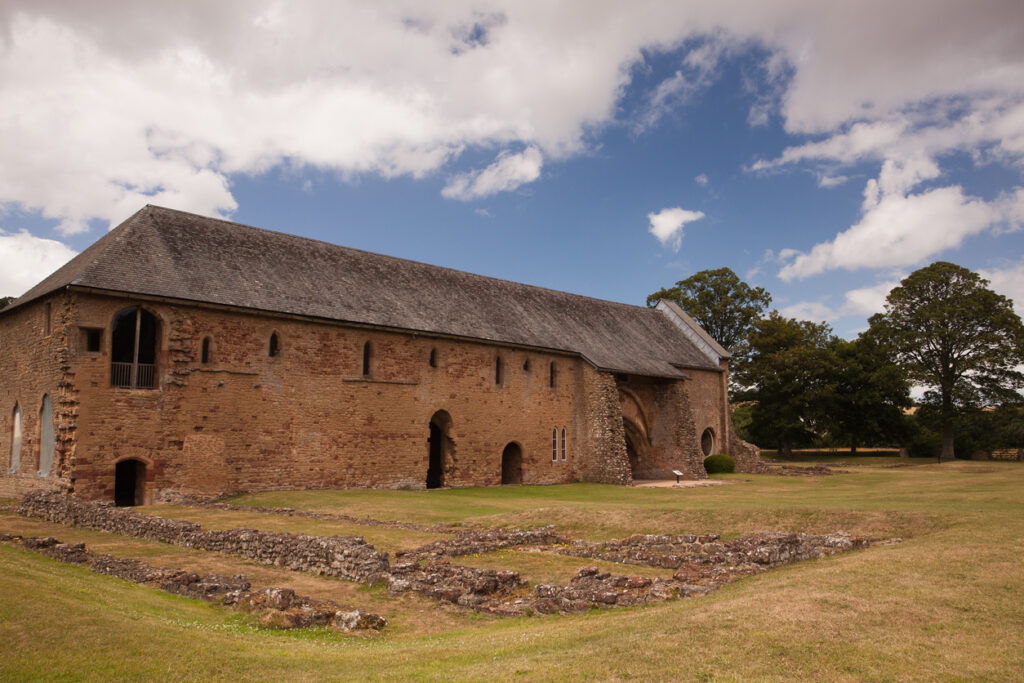
Cleve Abbey is located slightly east of Exmoor, but it’s still worth visiting while you’re in the region.
An 800-year-old monastery, the abbey boasts heraldic tiles from the 13th century and a 15th century refectory.
Of course, like most abbeys in the UK, it was destroyed during Henry VIII’s dissolution of the monasteries in the 16th century.
However, it’s worth looking around the ruins and seeing where history was made.
Tarr Steps
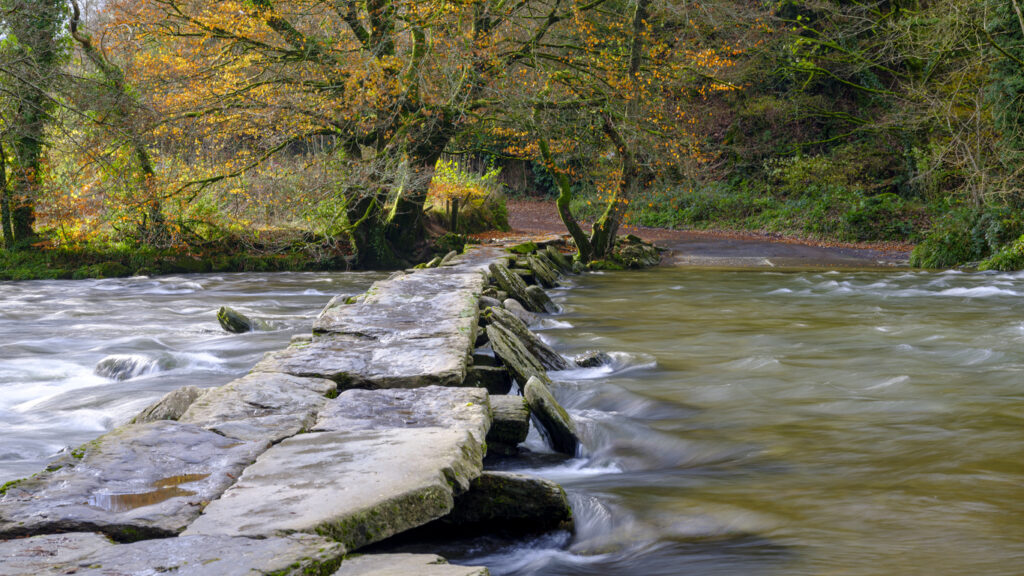
Tarr Steps is a clapper bridge in Exmoor; it bears some resemblance to the Postbridge Clapper Bridge in Dartmoor.
Historians aren’t sure exactly when it dates back to, with some guessing that it could be as old as 3,000 years!
In fact, legend has it that the steps were actually built by the devil as a place to sunbathe.
It’s still safe to walk over (provided you watch out for the devil) although it has been washed away and rebuilt a few times.
If you fancy a gentle walk, there are a few available in the local River Barle wooded valley.
Alternatively, you can take a walk from Dulverton to the steps!
See Wild Exmoor Ponies
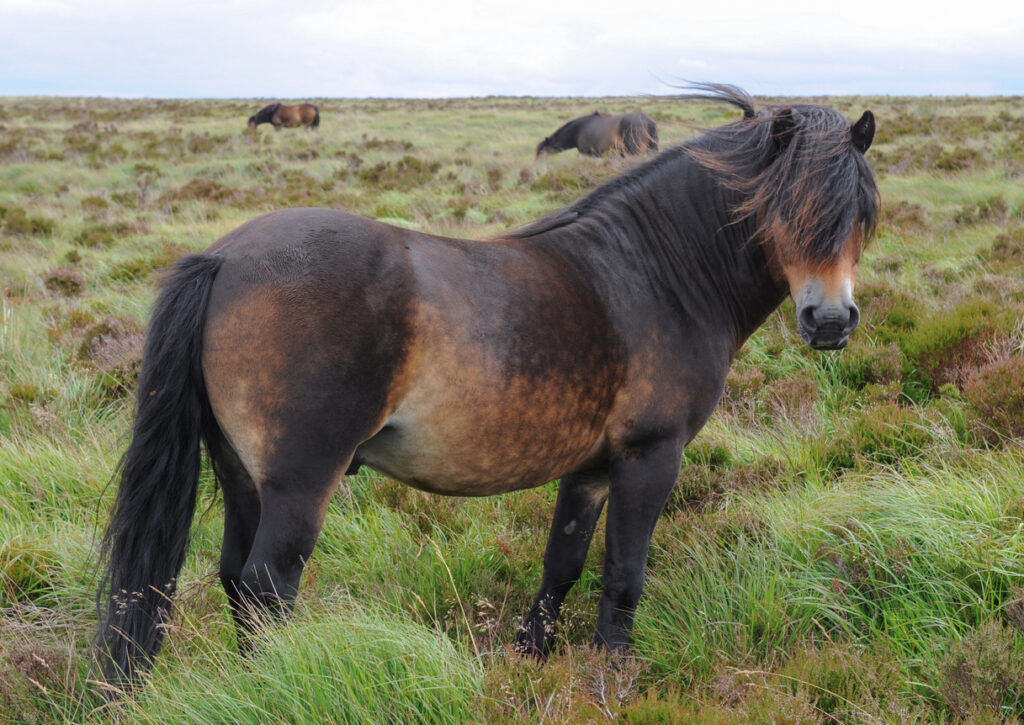
Exmoor is thriving with an array of wildlife, and its most loved ones are probably the wild ponies.
They are thought to be the oldest pony breed in the country as they were mentioned in the Domesday book and are recognisable for their brown hair and mealy colouring around their eyes.
The ponies nearly became extinct after WWII, when only around 50 survived.
However, thankfully big efforts that have been made to protect them mean that today, this number stands at around 3,500.
There are a few places to see Exmoor ponies in the park; try Porlock Hill, Contisbury, Dunkery Beacon and Haddon Hill.
But of course, as they are free-roaming, you could spot them anywhere!
Wimbleball Lake
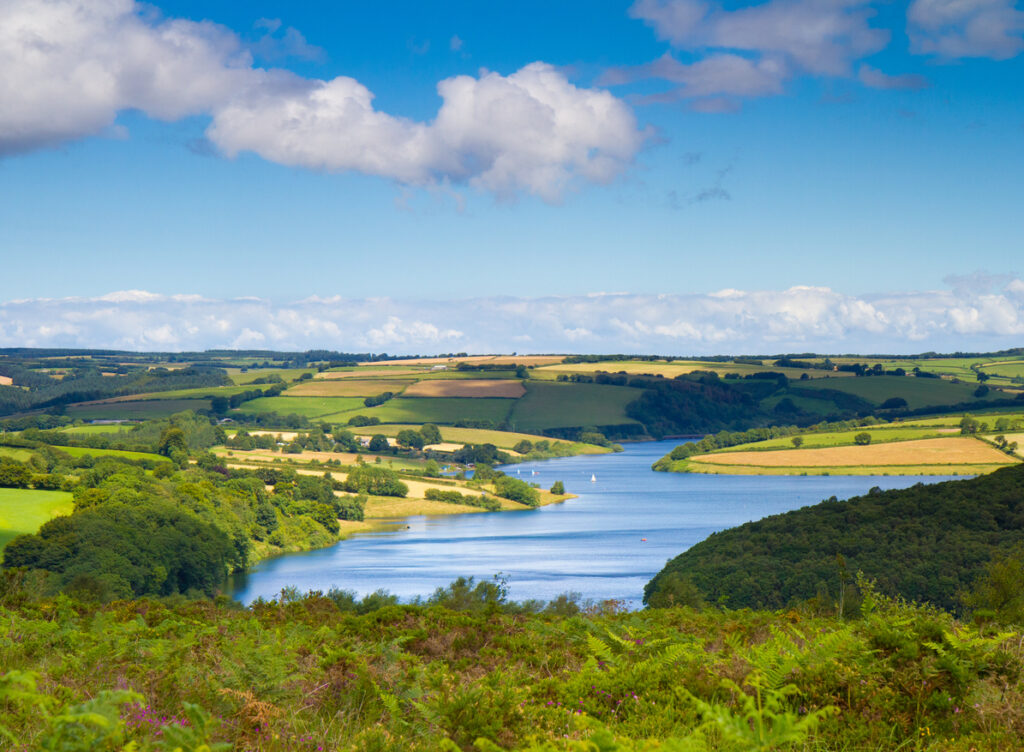
Wimbleball Lake is part of the South West Lakes Trust and is a must-visit if you want to spend some time by the water without straying too far from the coast!
It spans over 530 acres, and you can partake in different watersports and other activities while you’re here.
This includes stand-up paddle boarding, kayaking and looking out for wildlife like Exmoor red deer!
Watersmeet
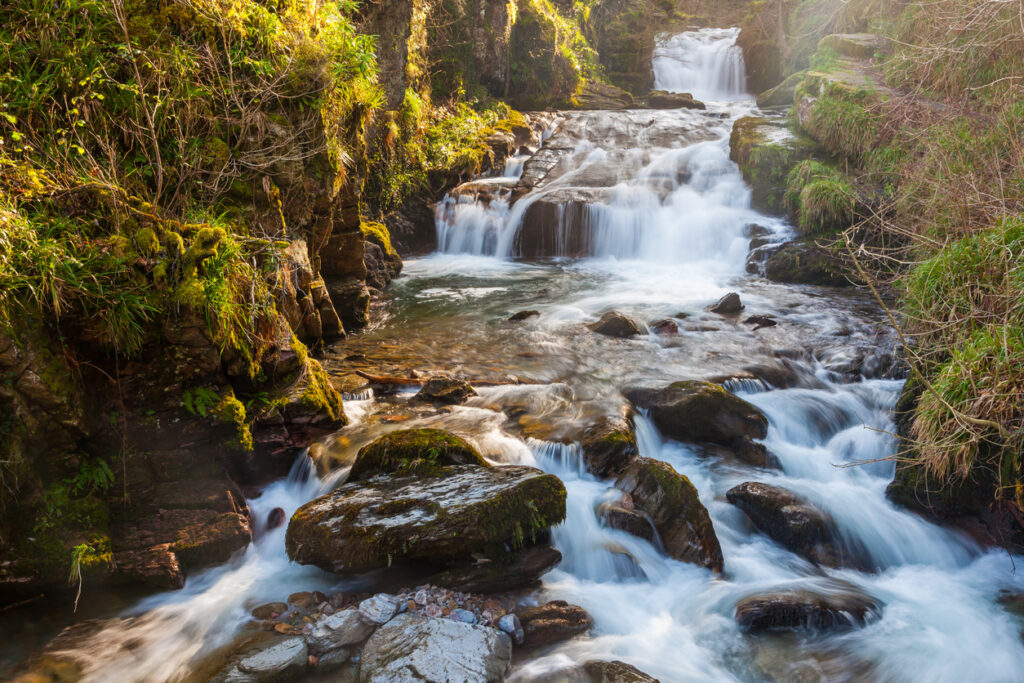
One of the best waterfalls in Devon, Watersmeet is located just inland of Lynmouth.
Watersmeet is run by the National Trust and is one of the deepest river gorges in the UK.
The name “watersmeet” comes from the fact that it’s where the rivers of the River Lyn and Hoar Oak Water meet.
You can explore the area (there are some watersports opportunities if you’re feeling adventurous!) and visit Watersmeet House which is an Edwardian tea room.
Try a local Cream Tea

One of the most important things to do as soon as you cross the Somerset/ Devon border is to try a cream tea.
These consist of scones, jam and cream, and are served with a pot of English breakfast tea.
They’re popular throughout Devon and in Cornwall – with one crucial difference.
In Devon, the cream goes on first, and then a blob of jam is put on the top. In Cornwall, the jam goes first. People feel very passionately about this, so don’t get this wrong – you may get in a lot of trouble with locals!
I’m in the interesting position of my family being from Cornwall, but living in Devon, so I often need to change the way I eat my cream tea depending on where I am and who I’m with!
Here are some places in Exmoor to enjoy a traditional cream tea:
(Some of these are in Somerset, but they’re so close to the county border that they can still serve a good cream tea!).
- Watersmeet tea garden, Lynmouth
- Kitnors Tearooms, Bossington
- Horner Tea Gardens, Horner
- Whortleberry Tea Room, Porlock
And sip on local cider!
Devon and Cornwall have cream teas, and Somerset has cider – and lots of it!
Don’t miss trying some of the local drinks while you’re in the area.
We found some great cider just at the local shop in Porlock (we like Rich’s cider), but there will be plenty of ciders on draught in whatever pub you visit.
Combe Martin Beach
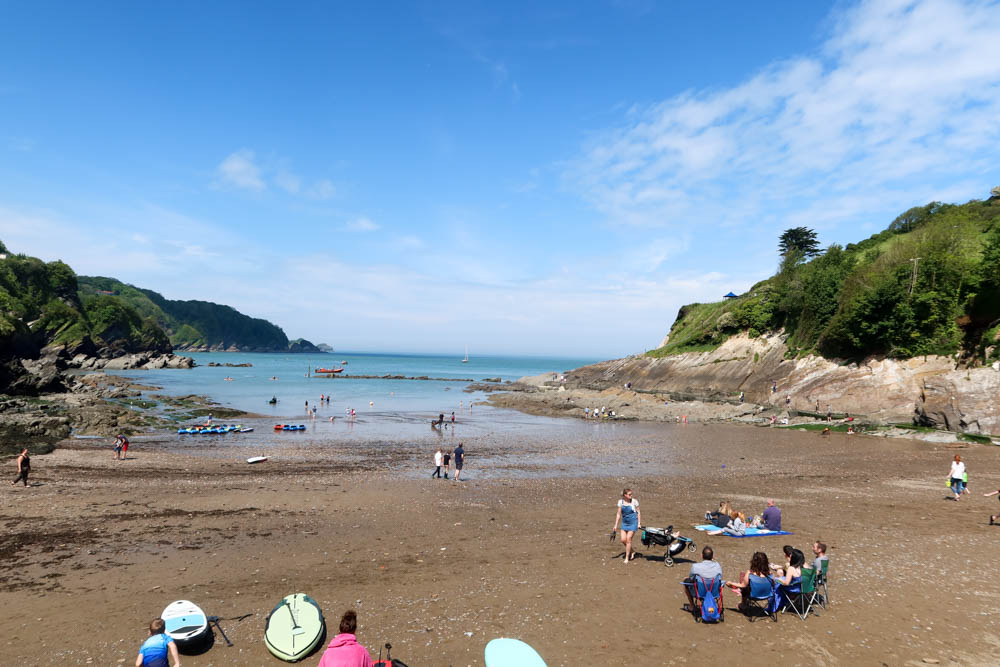
This is just out of Exmoor, but it’s one of my favourite beaches in Devon, so it had to make the list!
Combe Martin is a tiny village with two pubs, a few beach shops and some holiday homes.
While the beach isn’t massive, it’s a beautiful cove with plenty of rock pools and cliffs on either side.
Take in the beach by sitting at Focsle Inn and enjoying the views or exploring the sands.
It’s ideal for a beach day, although I’d recommend getting here quite early in the morning in peak season to have the chance of enjoying it without crowds.
Minehead
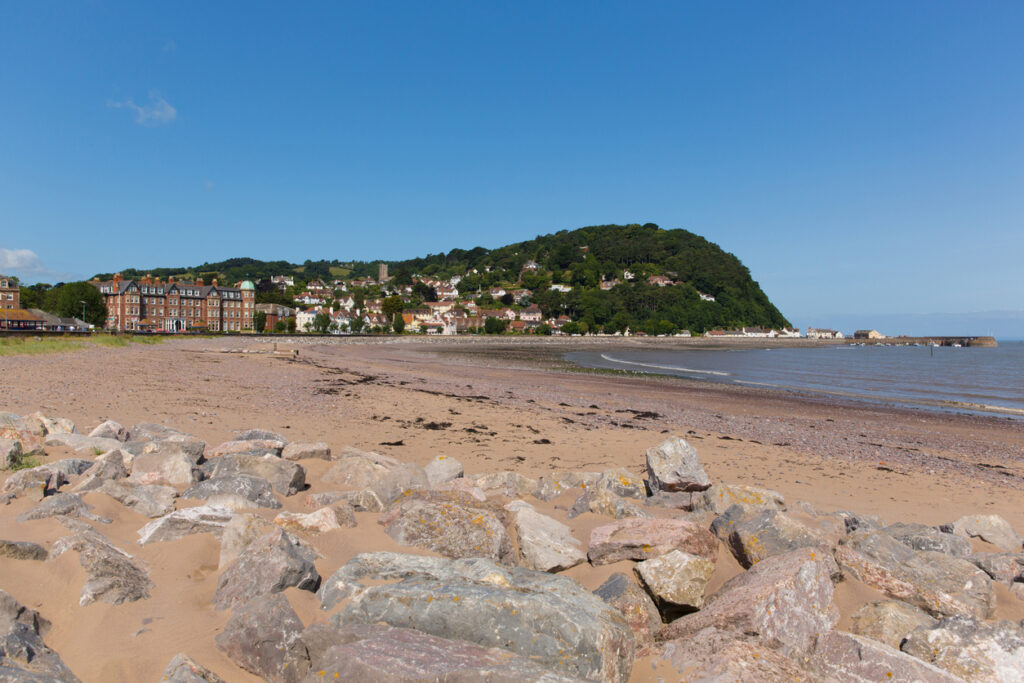
Also just out of the national park but on the east side, Minehead is a popular resort town.
Here, you’ll find plenty of amenities, like restaurants, places to stay and chilled-out cafes.
There’s also crazy golf and, of course, the broad beach that stretches down the coastline.
Minehead is a lot less nature-focused than the other Exmoor places of interest on this list, but it’s worth checking out if you fancy somewhere decent to eat or a day by the sea!
Watchet
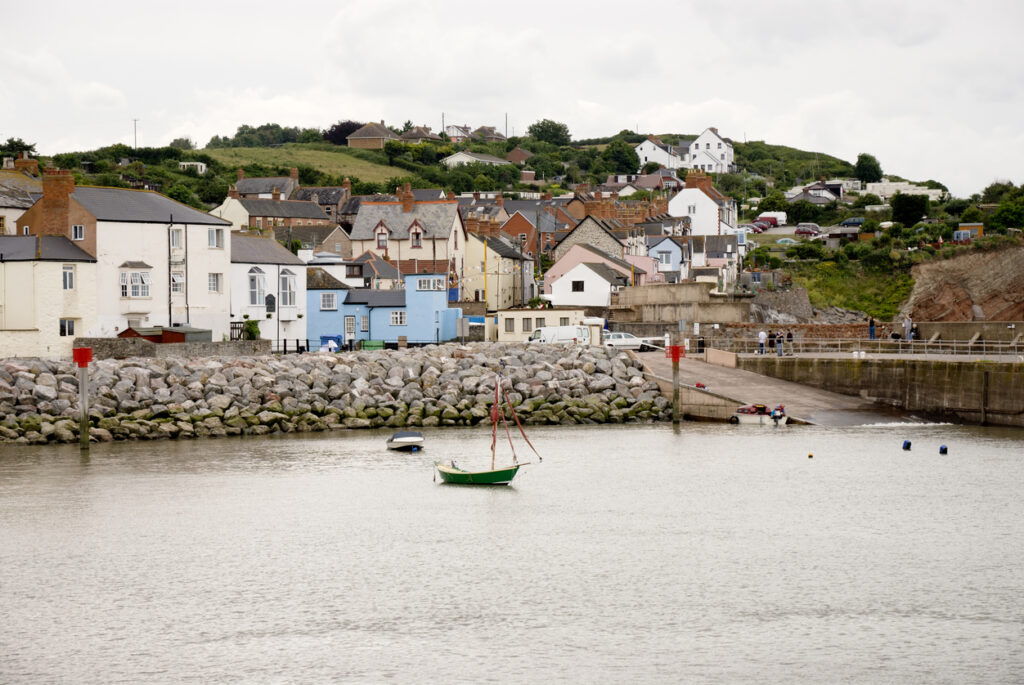
Just along the coast from Minehead sits the beautiful village of Watchet.
This is one of the most popular places to visit in all of Somerset, thanks to its glorious beach and tranquil atmosphere.
Again, it’s just out of the park, but it sits nicely in between it and the Quantock Hills, and is worth popping into if you’re passing through.
Where to stay in Exmoor
The White Horse Inn is a 17th century inn close to Cleeve Abbey. Rooms are basic but comfortable, with all of the mod cons you need for a cosy stay.
Every room has an en-suite bathroom; depending on your group size, you can choose between a single room, a double room and deluxe double room and even a three bedroom apartment!
Click here to read more about it.
Ships Mews are beautiful, modern and bright self-catering accommodations located in Porlock.
They’re an interior designers dream, with gorgeous lights and fashionable duvets. Click here to see what I mean!
The Bonnicott Hotel is a bed and breakfast hotel with cosy rooms with en-suite bathrooms. A delicious breakfast (with veggie options) is served daily. Click here to read more about it.
How to get to Exmoor
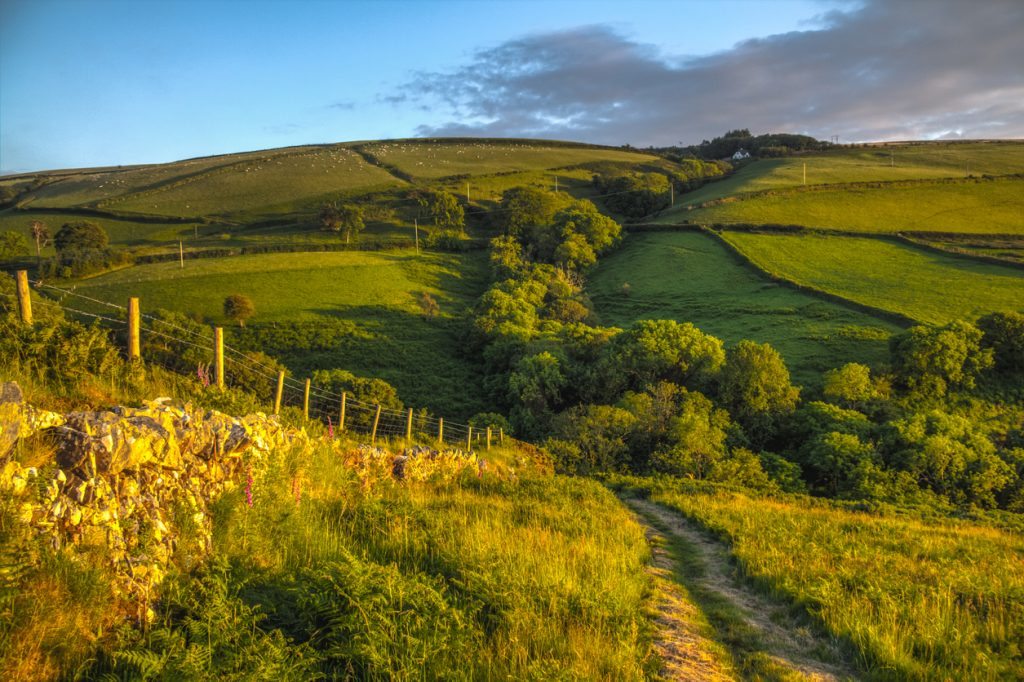
Unfortunately, public transport routes in Exmoor aren’t great.
It’s one of the reaons why it’s so rugged and wild, I guess!
The best way to get here is, by far, to drive.
You can reach parts of the park in one hour from Exeter, two hours from Bristol, and 3-4 hours from London.
Minehead is reachable by train and bus (take a train to Taunton and then change to a local bus), and there is a seasonal bus that you could take to destinations like Porlock and Lynmouth.
However, the bus is irregular and a bit of a hassle.
Of course, you could always walk along the South West Coast Path from Minehead!
The hike from Minehead to Porlock takes one day and Porlock to Lynmouth takes another. Just be warned – this part of the path is tough!
How to get around Exmoor

Aside from driving and hiking, you can take the seasonal bus – it’s not the most ideal way of getting around, but it still goes from A to B!
There aren’t any trains in Exmoor (the closest stations are Taunton and Barnstaple).
Full Exmoor Travel Guide!
Whether you want to go back in time at an ancient castle, be inspired by amazing landscapes with barely any other tourists, or bask in the beauty of North Devon’s best seaside towns, Exmoor national park has something for you!

